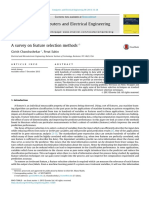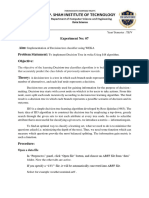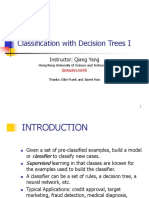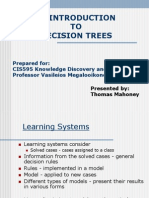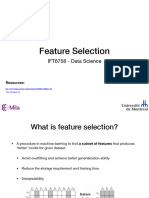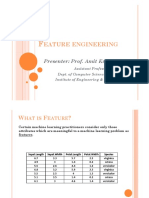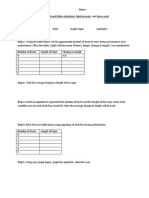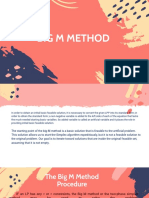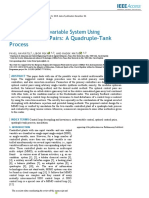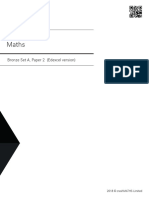0% found this document useful (0 votes)
73 views39 pagesIFN645Lecture4 - Feature Selection - 2021
The document discusses feature selection techniques for large scale data mining. It begins by introducing the topic of feature selection and the problems associated with initial feature sets, such as irrelevant, redundant, and interacting features. It then describes three common approaches to feature selection: manual selection, wrapper methods, and filter methods. For manual selection, domain experts are consulted to identify important features. Wrapper methods treat feature selection as a search problem to optimize a learning algorithm. Filter methods assign scores to features based on intrinsic properties. The document provides examples of these approaches and discusses their advantages and limitations.
Uploaded by
meghrajCopyright
© © All Rights Reserved
We take content rights seriously. If you suspect this is your content, claim it here.
Available Formats
Download as PDF, TXT or read online on Scribd
0% found this document useful (0 votes)
73 views39 pagesIFN645Lecture4 - Feature Selection - 2021
The document discusses feature selection techniques for large scale data mining. It begins by introducing the topic of feature selection and the problems associated with initial feature sets, such as irrelevant, redundant, and interacting features. It then describes three common approaches to feature selection: manual selection, wrapper methods, and filter methods. For manual selection, domain experts are consulted to identify important features. Wrapper methods treat feature selection as a search problem to optimize a learning algorithm. Filter methods assign scores to features based on intrinsic properties. The document provides examples of these approaches and discusses their advantages and limitations.
Uploaded by
meghrajCopyright
© © All Rights Reserved
We take content rights seriously. If you suspect this is your content, claim it here.
Available Formats
Download as PDF, TXT or read online on Scribd
/ 39

















